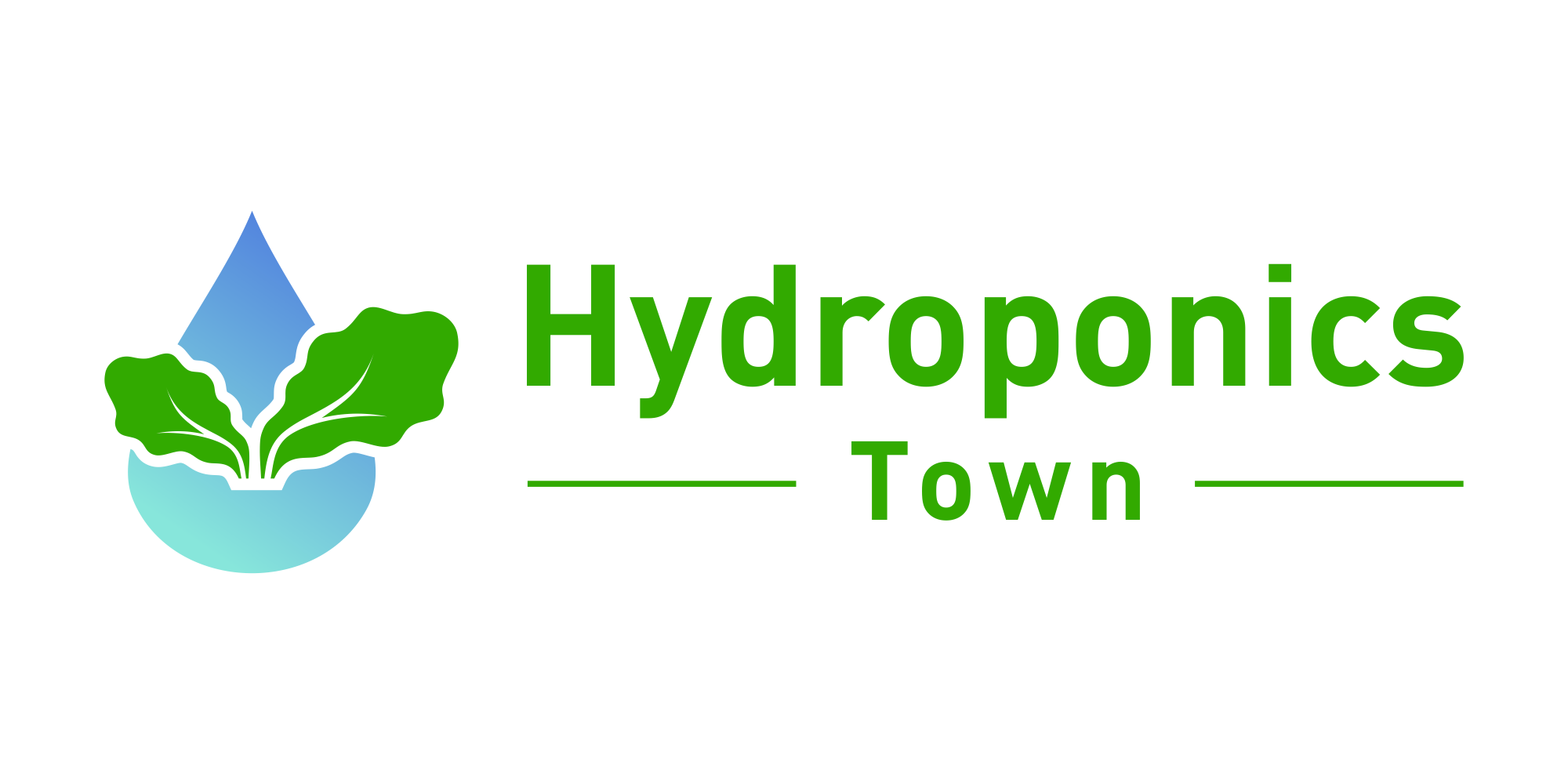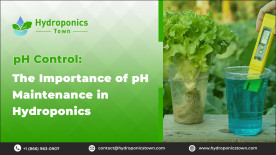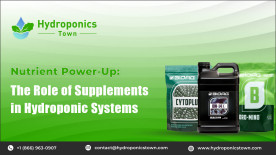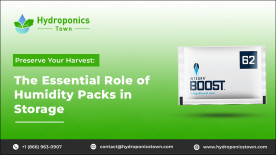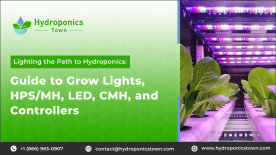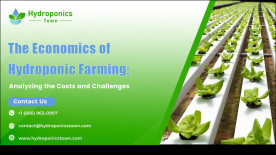Hydroponic gardening opens up a world of possibilities for cultivating plants in controlled environments, free from the constraints of traditional soil-based methods. Central to the success of any hydroponic setup is the right lighting system. In this guide, we illuminate the path to hydroponics system by delving into the realm of grow lights, exploring the options available, including High-Pressure Sodium/Metal Halide (HPS/MH), Light Emitting Diode (LED), Ceramic Metal Halide (CMH), and the role of controllers in optimizing plant growth.
Role of grow lights in providing essential light spectrum for plant growth
The importance of grow lights in hydroponics lies in their role in providing the essential light spectrum necessary for optimal plant growth. Grow lights simulate the natural sunlight that plants require for photosynthesis, enabling them to thrive in indoor environments where natural light may be limited. The specific grow light systems for seedlings to various stages of plant development, including germination, vegetative growth, and flowering. By delivering the appropriate wavelengths of light, grow lights support the photosynthetic process, enabling plants to produce energy for growth and development.
In addition to promoting photosynthesis, grow lights also play a pivotal role in regulating plant morphology, influencing factors such as leaf size, stem elongation, and overall plant structure.
Different types of hydroponic lights, such as fluorescent, LED, or high-intensity discharge (HID) lights, emit varying spectrums of light, and each has its own advantages in supporting different aspects of plant growth.hydroponics grow system, which are often used in indoor and controlled environments, rely on hydroponic lights to create a tailored light environment that meets the specific needs of the plants being cultivated. The ability to customize the light spectrum and intensity provided by grow lights for hydroponic growing oversaw plant growth and development, leading to higher yields and improved plant health.
Traditional options: High-Pressure Sodium (HPS) and Metal Halide (MH) grow lights
High-Pressure Sodium (HPS) lights:
HPS lights emit light in the yellow-to-red spectrum, suitable for flowering and fruiting stages.HPS lights are energy-efficient and emit a high level of lumens per watt.HPS lights have a longer lifespan compared to traditional incandescent bulbs.
Metal Halide (MH) lights:
MH lights produce a cool, blue-white light beneficial for vegetative growth. MH lights provide more intensity and higher levels of blue spectral light.MH lights are versatile and can support various stages of plant growth.
Pros and cons of using HPS/MH lights
HPS/MH lights in hydroponic systems -
Aspect | HPS lights | MH lights |
Pros | Ideal for flowering and fruiting stages. | Suitable for vegetative growth stages. |
Energy-efficient with high lumen output. | Higher intensity and blue light spectrum. | |
Long lifespan compared to other options. | Versatile and can be used throughout plant growth. | |
Cons | Limited spectrum, not optimal for all growth stages. | Less energy-efficient than HPS lights. |
Higher heat output, requiring additional cooling systems. | Lower lifespan compared to HPS lights. | |
Maintenance of color consistency over time. | Emit more heat than LED grow lights. |
Refer: The Ultimate Guide to Hydroponic Farming Everything You Need to Know
Embracing energy efficiency: Light Emitting Diode (LED) grow lights
Advantages of LED grow lights in hydroponics:
| Advantages | Description |
| Energy efficiency | hydroponic led grow lights consume less power compared to traditional options, resulting in lower energy costs and reduced environmental impact. |
| Customizable spectrum | Offers a customizable spectrum, enabling growers to adjust light wavelengths to match specific plant growth requirements. |
| Long lifespan | Longer lifespan than traditional options, reducing the frequency of replacements and maintenance. |
| Low heat emission | Produces minimal heat, minimizing the risk of heat damage to plants and eliminating the need for additional cooling systems. |
| Compact design | LED lights are Compact and lightweight, making them easy to install and suitable for various indoor growing setups. |
Energy-saving features and long-term cost-effectiveness:
Consume less electricity, resulting in lower energy bills and reduced operational costs for hydroponic systems.
The low heat emission of LED lights decreases the need for cooling systems, further saving energy and reducing overall energy consumption.
Durable and long-lasting, minimizing the frequency of replacement and related costs over time.
Environmentally friendly, producing minimal heat and reducing greenhouse gas emissions associated with energy consumption.
While hydroponic led grow lights may have a higher initial investment cost, their energy-saving features and long-term cost-effectiveness can result in a significant ROI over the lifespan of the lights.
Harnessing innovation: Ceramic Metal Halide (CMH) grow lights
Ceramic metal halide (CMH) grow lights, also known as light-emitting ceramic (LEC) grow lights, utilize a ceramic arc tube as a part of the light generation process. This technology combines the efficiency of metal halide lighting with the benefits of ceramic components.
High efficiency: CMH grow lights offer high energy efficiency and superior light output, making them an attractive option for growers seeking optimal performance with reduced energy consumption.
Full spectrum: CMH lights provide a full spectrum of light, including UV and IR, which closely mimic natural sunlight. This full spectrum is beneficial for promoting robust plant growth throughout all stages of development.
Light quality: The quality of light produced by CMH bulbs is often superior, enhancing color rendition and promoting healthier and more vibrant plant growth compared to traditional lighting options.
Longevity: CMH grow lights have a longer lifespan compared to standard metal halide lights, resulting in lower maintenance and replacement costs over time.
Uniform distribution: CMH technology ensures uniform light distribution, promoting consistent plant growth and minimizing hotspots or uneven coverage within the growing area.
Application of CMH lights in various hydroponic setups:
Indoor gardening: lights for hydroponics indoor gardening applications, such as grow tents, vertical farming systems, and controlled environment agriculture, where consistent and high-quality lighting is essential for successful plant growth.
Commercial cultivation: CMH technology is increasingly being adopted in commercial hydroponic operations and greenhouse facilities due to its superior light output, energy efficiency, and overall performance.
Supplemental lighting: In some hydroponic setups, CMH lights are used as supplemental lighting alongside natural sunlight or in combination with other artificial lighting sources to enhance the light spectrum and promote plant development.
Specialized cultivation: CMH grow lights are also employed for specialized cultivation of high-value crops, including ornamental plants, herbs, microgreens, and other high-demand produce.
Types of controllers available for hydroponic lighting systems
Hydroponic controllers play a crucial role in managing the intensity, spectrum, and timing of grow lights, allowing growers to create tailored light environments optimized for specific plant growth requirements.
Timer controllers: These accessories allow users to set specific on/off schedules for the hydroponic grow lights, regulating the photoperiod to mimic natural daylight cycles for different plant growth stages.
Dimming controllers: Dimmers enable precise adjustment of light intensity, allowing growers to tailor the light output based on plant requirements and environmental variables.
Programmable Spectrum Controllers: These advanced controllers provide the ability to modulate the light spectrum delivered by LED grow lights, catering to the specific spectral needs of plants during different growth phases.
Environmental sensors: Some controllers integrate environmental sensors to monitor factors such as temperature, humidity, and CO2 levels, enabling automated adjustments to the lighting parameters for optimal plant growth.
Smart controllers: Leveraging advanced technologies, smart controllers offer remote access and automated programming capabilities, allowing growers to monitor and adjust lighting settings from anywhere using mobile or web applications.
Factors to consider when selecting grow lights for specific crops and growing environments
| Aspect | Consideration |
| Light spectrum | Choose lights with customizable or natural spectra tailored to the specific growth stages and crop requirements. |
| Light intensity | Ensure the selected lights provide appropriate intensity, considering factors like light penetration and coverage area |
| Energy efficiency | Opt for energy-efficient options like LED and CMH lights to minimize operational costs and environmental impact. |
| Heat emission | Consider the heat output and implement efficient heat dissipation mechanisms or cooling systems as needed. |
| Control and automation | Select lights compatible with advanced control systems for precise management of intensity, spectrum, and timing. |
| Supplemental lighting | Evaluate if supplemental lighting is necessary for environments with limited natural light to maintain optimal conditions. |
| Longevity and durability | Assess the lifespan and durability of the lights to minimize maintenance and replacement costs over time. |
| Grow space characteristics | Consider the layout and size of the growing area for proper mounting and positioning of the lights for uniform light distribution. |
Checkout: 13 Best Plants to Grow Hydroponically 2023
Tips for installation, and maintaining the performance of grow light systems
Proper installation: Ensure that hydroponic grow lights are installed according to manufacturer guidelines, and positioned at the optimal height and angle for uniform light distribution across the entire crop canopy.
Regular calibration: Periodically calibrate and adjust the light intensity and spectrum of the grow lights to align with the specific growth stages of the cultivated crops.
Cleaning and dusting: Regularly clean the surfaces of grow lights to remove dust and debris, which can obstruct light penetration and reduce overall light output.
Scheduled maintenance: Establish a maintenance schedule for inspecting and servicing grow light systems, including checking for any signs of wear, damage, or component degradation.
Environmental control integration: Integrate grow light systems with environmental controls, such as sensors and automated climate regulation, to optimize growing conditions and minimize energy usage.
Light scheduling: Develop customized light schedules aligned with the growth cycles of the crops, ensuring they receive the appropriate amount of light at different stages of development.
Monitoring and data analysis: Implement monitoring systems to track the performance of grow lights and analyze data to make informed adjustments to optimize crop growth and energy efficiency.
The advancements in grow light technologies such as LED and CMH lights signify a transformative shift towards energy efficiency, customizable light spectra, and long-term cost-effectiveness in hydroponic systems. Additionally, the integration of controllers plays a pivotal role in optimizing plant growth by precisely managing light intensity, spectrum, and timing. With careful consideration of factors like light spectrum requirements, energy efficiency, and the use of different types of grow lights, hydroponic growers can create an environment conducive to healthy plant growth and maximize their crop yields.
FAQs
Can I use a combination of different types of grow lights in my hydroponic setup?
Yes, a combination of different types of grow lights can be used in a hydroponic setup to cater to the specific light spectrum needs of plants at different growth stages.
What types of grow lights are commonly used in garden hydroponics?
Common hydroponic led lights include LED grow lights, high-pressure sodium (HPS) lights, metal halide (MH) lights, and ceramic metal halide (CMH) lights.
What role do controllers play in hydroponic lighting systems, and how do they optimize plant growth?
Controllers in hydroponic lighting systems optimize plant growth by managing light intensity, spectrum, and timing. They enable precise control over the light environment, ensuring plants receive the ideal conditions for photosynthesis and growth at different stages.
